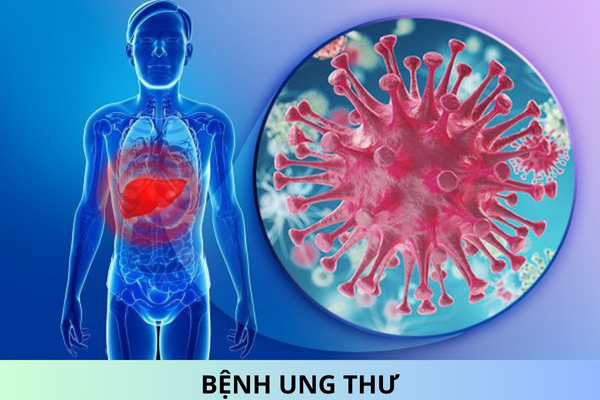What are regulations on management of anaphylaxis in some special cases in Vietnam?
What are regulations on management of anaphylaxis in some special cases in Vietnam? What are regulations on the indications for skin testing in anaphylaxis in Vietnam?
Thank you!
What are regulations on management of anaphylaxis in some special cases in Vietnam?
Pursuant to Appendix IV of the Guidelines for the treatment of anaphylaxis in some special cases issued together with Circular 51/2017/TT-BYT promulgateing regulations on the management of anaphylaxis in some special cases as follows:
I. Anaphylaxis in subjects using special drugs
1. Anaphylaxis in people taking Beta blockers:
a) This patient's response to adrenaline is often poor, increasing the risk of death.
b) Treatment: basically the same as the general regimen for anaphylaxis, requiring close monitoring of blood pressure, intravenous adrenaline and possibly other vasopressors.
c) Bronchodilators: if beta 2 agonists respond poorly, additional anticholinergics should be used: ipratropium (0.5 mg nebulized or 2 inhalations).
d) Consider glucagon when there is no response to adrenaline.
2. Anaphylaxis during anesthesia, surgical anesthesia:
a) These cases are often difficult to diagnose anaphylaxis because the patient has been anesthetized, sedated, skin manifestations may not appear, so subjective signs cannot be assessed. During anesthesia, surgical anesthesia such as blood pressure drops, blood oxygen levels decrease, pulse tachycardia, changes on monitoring monitor, new crackles appear.
b) As soon as anaphylaxis is suspected, blood can be drawn to measure tryptase at the time of diagnosis and the patient's baseline tryptase level.
c) Pay attention to carefully exploit the allergy history before administering anesthesia, surgical anesthesia to take preventive measures.
d) Note: some anesthetics are lipophilic substances that are highly toxic when entering the body, causing a severe poisoning like anaphylaxis that can be fatal within minutes, requiring treatment. Emergency treatment with antitoxin (lipid emulsion) combined with adrenaline because it is not possible to know immediately whether the reaction mechanism is the cause of toxicity or allergy.
dd) Using antitoxic drugs that are lipid emulsions intravenously such as Lipofundin 20%, Intralipid 20% intravenously injected quickly, which neutralizes toxins caused by fat-soluble anesthetics entering the circulation. Dosage is as follows:
- Adults: 10ml/kg total dose, of which 100ml bolus, followed by intravenous infusion of 0.2-0.5ml/kg/min.
- Children: total dose of 10ml/kg, of which bolus is 2ml/kg, followed by intravenous infusion of 0.2-0.5ml/kg/min.
In severe and critical cases, two bolus injections can be administered within a few minutes.
3. Anaphylaxis to contrast agents:
a) Anaphylaxis to contrast material occurs mainly by non-allergic mechanism.
b) Use of low osmotic and non-ionizing contrast media is recommended (lower anaphylaxis).
II. Other special cases
1. Anaphylaxis due to exertion
a) The type of anaphylaxis that occurs after strenuous activity.
b) Typical symptoms: patient feels tired, exhausted, hot flushes, skin redness, itching, urticaria, possibly angioedema, wheezing, upper respiratory tract obstruction, pulse collapse. Some patients often develop symptoms only when exercise is accompanied by other co-stimulants such as: food, non-steroidal anti-inflammatory drugs, alcohol, pollen.
c) The patient must stop exercising as soon as the first symptoms appear. Patients should carry an anaphylactic emergency kit or a standard dosed adrenaline pump (EpiPen, AnaPen...). Treatment according to Appendix III issued with this Circular.
d) Sending to an allergist-immunology specialist to screen for the cause.
2. Idiopathic anaphylaxis
a) Idiopathic anaphylaxis is diagnosed when symptoms of anaphylaxis appear without an identifiable cause.
b) Treatment according to Appendix III issued with this Circular.
c) Prophylactic treatment: indicated for patients with frequent occurrence of anaphylaxis (> 6 times/year or > 2 times/2 months).
d) Prophylactic treatment according to the protocol:
- Prednisolone 60-100mg/day x 1 week, then
- Prednisolone 60mg/day x 3 weeks, then
- Gradually reduce the dose of prednisolone over 2 months
- H1 antagonists: cetirizine 10mg/day, loratadine 10mg/day..../.
What are regulations on the indications for skin testing in anaphylaxis in Vietnam?
Pursuant to Appendix VIII of the Guidelines for the treatment of anaphylaxis in some special cases issued together with Circular 51/2017/TT-BYT promulgateing regulations on the indications for skin testing in anaphylaxis in Vietnam as follows:
1. Do not test for all drugs except for the cases specified in Clause 2 below.
2. A skin test must be performed before using the drug or allergen if the patient has a history of allergy to the drug or related allergen (drug, allergen of the same class or cross-reactivity) and if the patient has a history of history of anaphylaxis to various allergens.
3. When testing, anaphylaxis must be available.
4. Skin testing is done in accordance with the provisions of Appendix IX issued together with this Circular.
5. If the patient has a history of allergy to the drug or allergen and the skin test result (skin prick or dermal) is positive, the drug or allergen must not be used.
6. If the patient has a history of drug or allergen allergy and the skin prick test is negative for that allergen, continue to do endodermal testing.
7. If the patient has a history of drug allergy and the skin and endodermal prick test results are negative for the drug or allergen, in the case of an emergency, the drug must be used (no alternative medicine) should consider doing the rapid drug response and/or desensitization at an allergist or a physician trained in clinical allergy-immunology at a medical facility capable of anaphylaxis and must be approved by the physician. patient or the patient's legal representative in writing.
8. After the allergic condition has stabilized for 4-6 weeks, re-examine the clinical allergist-immunologist or specialists trained in basic clinical allergy-immunology for anaphylaxis.
Best regards!











